Killeen Castle - golfing heaven
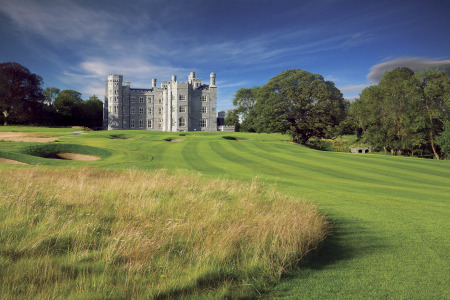
Sitting in Atlanta airport for three days might not seem like one of the perk’s of the greatest job in the world but when weighing up the pro and cons of covering a sport that takes you from the rugged beauty of the west of Ireland to the plains of Kazakhstan or the deserts of Arizona, a 25-minute jaunt from the capital into the heart of County Meath might seem, well, tame.
How wrong I was.
Jack Nicklaus has left his imposing bear prints on all every corner of the globe yet it was only upon returning home for a May Day visit to his stunning new signature course at Killeen Castle near Dunsany in the heart of the Royal County, that the true meaning of the wow factor struck home.
There is much to be said for Los Angeles, Tucson, Miami and Augusta when the sun shines and the drives fizz, but the delights that lie in store for the visitor to Killeen Castle hit you right between the eyes and convince you that there really is no place like home.
Playing a round of golf with a gentleman like Des Smyth is one of the great pleasures in life. Playing with him around a golf course that has been designed by one of the greatest golfing brains of all-time, is a total revelation. If only one had the short game skills you can acquire at Killeen Castle’s Dave Pelz Short game Scoring School, which is unique to Europe, it could have been an even more special day.
Not having travelled with Rory McIlroy to the local dog pound recently, it is difficult to know if Des uttered more “wows” than the cross between a Maltese and a poodle that captured the heart of Ireland’s latest tour winner. Having played golf all over the world since he joined the tour in 1973 and designed such courses as Seapoint, Bray or Waterford Castle, Des knows just how big a challenge it can be to create something that will challenge the best and yet encourage the golfing everyman to come back for more.
To say he was impressed by what he saw at Killeen Castle would be an understatement and it was easy to see why given the five star quality of the golf course that will host Ireland’s first staging of the Solheim Cup matches between the leading women professionals from Europe and the United States in 2011.
“That was fantastic,” Des says after our round, and he wasn’t talking about my golf. “I’d seen it at the design stage so I really wanted to come and see the finished product and I’m highly impressed. It’s a hell of a course.
“The great test of a good course is when you ask the question: Do I want to play it again? Frankly, I can’t wait to get back to play here with my pals because you can have a really enjoyable game if you play off the correct tees.
“That is the magic ingredient of golf course design and part of the beauty of this game. If golf was only about ball striking, there would only be a few guys still playing. But there are so many other aspects -—iron play, pitching, lob shots, bunker shots, the mental game and putting- and Jack has presented it all here with his usual combination of risk and reward.”
The expansive, par-72 course can play 7,677 yards from the back tees to 6,118 yards from the forward markers. Yet that is not all that Killeen Castle has to offer. The stunning Dave Pelz Scoring Game School - the first of its kind outside the United States - was lovingly designed by the former NASA scientist, who has helped that short game wizard Phil Mickelson capture three “major” championships since they started working together in 2004.
Of course, before the Solheim Cup comes to town in 2011 the 11th century estate will boast a luxury, 155-room hotel to match its sumptuous surroundings. Then there is the fishing.
Everything is top class at Killeen Castle, which is exactly what one would expect from a place where Nicklaus poured over 40 years of golf design experience into creating a small piece of golfing heaven just five miles from the Hill of Tara, the ancient home of the High Kings of Ireland.
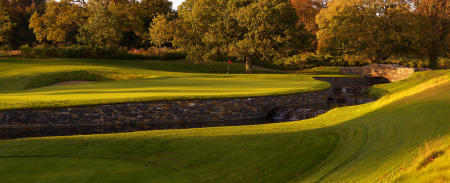
[The course that Jack built]
The running joke with a Jack Nicklaus design is how frightening it can be when the great man makes one of his frequent visits to a signature course design and begins waving his arms around like a conductor directing an orchestra. They say that every gesture costs the client $20,000 and Nicklaus did plenty of waving on his frequent visits to Killeen Castle.
 Jack Nicklaus prepares to get to workThe men behind the project - Castlethorn Construction’s Brian Wallace, Joe O’Reilly and John Fitzsimons - wanted nothing but the best for Killeen Castle and when Nicklaus came to town, he settled for nothing less.
Jack Nicklaus prepares to get to workThe men behind the project - Castlethorn Construction’s Brian Wallace, Joe O’Reilly and John Fitzsimons - wanted nothing but the best for Killeen Castle and when Nicklaus came to town, he settled for nothing less.
According to Nicklaus Design, the company has 341 courses open for play in 34 countries and Nicklaus has been involved in the design of 271 of them. Unlike many big name designers, who often see the course for the first time the day they turn up for the opening, Nicklaus is very much a hands on creator and this one is a beauty.
Indeed, when I spoke to the 18-time major winner about his second Irish creation following the highly acclaimed Mount Juliet in County Kilkenny, his pride in his work shone through from the start.
“When I first started out in design, I did it as an avocation when it was fun to be involved,” Nicklaus explains. “Finally, after ten years of doing that my business people came to me as asked me if I thought it was about time this avocation, which was taking up 50 percent of my time, became a vocation.
“So we expanded what we were doing and started doing it worldwide, which is something I have really enjoyed because it has given me an opportunity to be on the cutting edge of what is happening everywhere golf has emerged.
“The first time I spent any really time in Ireland was when I played with Seve down in Royal Dublin and then I opened Mount Juliet. I remember playing Royal County Down in the 2001 Senior British Open, which was very unusual from my standpoint, having so many blind shots. Of course, my visits have been a lot more frequent in the last five or six years and Ireland opened up to a lot of golf, though it has slowed down over the last year or so along with the world economy. It will be back and we are trying to be involved where we can.”
The 2011 Solheim Cup was not a factor in the design of Killeen Castle, though the heart-stopping finishing stretch appears to be tailor-made for matchplay golf. The idea was to create a top class golf course that could be played by everyone from Tiger Woods to Roger Rabbit.
“If you are going to have an event, you need some yardage and some space,” Nicklaus says. “Killeen Castle is a long golf course from the back tees but it doesn’t necessarily mean that you have to go and play it from there. You have the ability to have some variety and mix the tees to have a long golf course or a short golf course or an in between golf courses. All those processes are fun and have been fun down the years.”
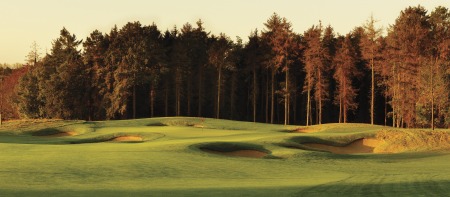
[Risky business - Des v Jack]
Des Smyth never played with Jack Nicklaus in a major. They nearest they came to a head to head confrontation was in the 1981 Ryder Cup at Walton Heath when Smyth and Jose Maria Cañizares lost 3 and 2 to Nicklaus and Tom Watson. The pair still meet frequently in the United States, sitting down for a chat over coffee on a regular basis to discuss the fine points of the game that has been the loves of their lives since they were children.
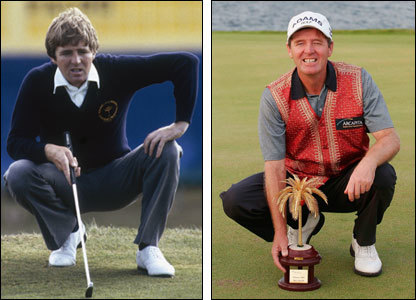 Des SmythNow 56, he is enjoying the autumn years of a storied career having earned over $4.4 million in the senior ranks in America before coming back to Europe this season. The golden locks might have faded somewhat, but the boyish enthusiasm is still there and the prospect of playing a new Nicklaus course fills him with energy.
Des SmythNow 56, he is enjoying the autumn years of a storied career having earned over $4.4 million in the senior ranks in America before coming back to Europe this season. The golden locks might have faded somewhat, but the boyish enthusiasm is still there and the prospect of playing a new Nicklaus course fills him with energy.
“I don’t let the game get me down,” he says, touching his toes as a warm up exercise on the first tee. “I come out with a positive attitude every day and I am always working on my swing and my game.”
Smyth has always been a huge admirer of Nicklaus the player and Nicklaus the designer and he was not disappointed by what he discovered at Killeen Castle.
“I was always a Jack Nicklaus fan,” he says, cracking his drive straight down the middle off the championship tee at the 485-yard opening hole. “When I went to the Open, I always made a point of finding out when Jack was going out so that I could either go out and watch him or sit on the range. When he had that famous match with Watson at Turnberry in 1977, I walked their practice round and stood behind every shot. Because I wanted to be a player, I thought I would learn by watching the best players. I certainly learnt an awful lot from scrutinising top players and Jack was special.”
The course is playing to its maximum length following heavy early morning rain and as Des contemplates a three-wood approach to the first green, we make the decision to play the course from the blue tees rather than the tips, reducing the test from a daunting 7,677 to a highly challenging 7,142 yards.
“Okay,” Des says, surveying the nest of bunkers protecting the right hand side of the first green. “This is typical Nicklaus with the green angled to the right and the pin protected by bunkers. You know there is a green there to the right but the only way to the pin is to fly it over the sand and check it. You can’t scuttle one in unless you want to have a long putt from the left. He asks you to play a lot of shots and I’ve always liked Nicklaus courses for that reason.
“If you want to get your birdie, you must take the shot on. So you had better be able to play bunker shots if you want to play a Nicklaus course because you are going to have plenty of them.”
The par-five second offers the big hitters a chance to go straight for the green in two by flying another nest of bunkers on the left. Pull it off and you are looking into the green. Lay up and you have a tricky pitch over more sand to a raised green.
At the 395-yard third, Des holes out from the fairway for an eagle two to a pin hidden behind bunkers.
It reminds him of a shot he played en route to his victory in the 1983 Sanyo Open at El Prat in Barcelona, where he hit an arrow-straight six-iron at the pin and feared it had gone long, such was the apathy of the spectators behind the green.
“In those days they had the local military phoning in the scores from behind the green and there wasn’t a murmur at the back. Not a sausage. I walked up and saw a pitch mark six feet short of the hole and realised it must have gone in for a two. As my caddie John O’Reilly said, ‘They probably thought that poor chap is in trouble now, his ball is after going into that hole.’ ”
Smyth has the eye of a designer and he remarks on the small, sloping third green, surrounded by deep traps and the difficulty it presents for anything hit off line.
By the time we reach the fourth, a 434-yard par four that arcs to the right, he is raving about the beauty of the course and the difficulty of the challenge as well as the stunning townhouses and family homes that overlook some of the more spectacular stretches.
“It’s a magnificent place,” he says. “I’d be deliriously happy to come up here and play with my friends. It is like having Mount Juliet 45 minutes from where I live. I think so much of Mount Juliet, I’d drive there for a game. Here, Jack has done a great job of making it progressively easier depending on the tees you use and that is a very difficult thing to do. You really are building golf courses for people to enjoy but at the same time, you have to make it easy to switch, if you have a major event and this course could host anything.”
The fifth is another strong par four but it is the 174-yard sixth that sends Smyth into raptures. Played uphill to a well-bunkered green with a landscaped background that would match anything Augusta National has to offer, it is surrounded on all sides by sand.
“It is a hole that requires huge accuracy and it is tough today into the wind,” Des says. “Just looking at that hole is enjoyable. The whole aesthetic is gorgeous. It is perched up there like a links hole but with sand where you would expect to see run offs.”
The 520 yard, par-five seventh is another risk-reward adventure. Carry the fairway bunkers off the tee and you can go for the green. Yet Nicklaus also gives you plenty of space to lay up — an easy one to the right or a daring one over the water to the left.
The par-three eighth is slightly downwind, a tribute to the clever routing, while the index one ninth require two serious hits to cover the 475 yards that separate the championship tee from the long, angled green.
Trees come into play at the 10th and again at the par-four 11th, where the deceptively long approach shot must be threaded between the towering specimens than guard the entrance to another sensationally designed green.
There are many “feature” holes but the par-five 12th is the pick of the bunch, an Irish gem in every sense. Mature trees frame the entire left hand side of the hole but it is only when you reach the crest of the fairway that the true beauty of the challenge reveals itself in all its glory. Think the 13th at Augusta.
A big drive leaves a three-wood to a small green protected on the right by the Rock River, which has been beautifully faced with limestone, quarried from a source behind a green that almost caused a fairy riot!
Nicklaus originally wanted to tuck the green in further to the left, partially hiding it behind the trees. But that would have meant taking out a hawthorn that now sits in a lay-up area that gives those taking on the green a bale out to the left.
“John Fitzsimons told him Jack couldn’t take the tree out,” explains Seamus Carroll, the manager of the Pelz School. “He told him, ‘That’s a fairy tree, Jack. You can’t take that out. It’s bad luck to remove a fairy tree.’
“Of course Jack looked at him like he had two heads but they redesigned the hole to leave the tree alone and the result is just amazing.”
It was also expensive but the end justifies the means and Smyth is almost at a loss for words as he contemplates his 243-yard approach.
“Oh baby, look at this,” he says. “That is a terrific looking shot. It would remind you of something you’d face at Augusta. If I was playing this shot in a tournament I would aim for the bunker on the left of the green with a very soft cut so that if it comes back I will be perfect. You can’t think about the stream to the right and Jack’s given you the bale out area across the water there to the left. What a great hole.”
Smyth nails his three wood at the bunker and believes he’s hit the perfect shot as it cuts slightly and descends towards the pin. It looks certain to finish a few feet away but the pin is in the back right hand corner of the small green and the ball barely carries the stream.
“Wow,” Des says. “It is beauty and the beast. Even laying up short puts you under pressure. That is some hole.”
The par-four 13th, par-three 14th and par-five 15th are superbly designed but the course saves the best for last with the sting in the tail coming over the last three holes.
Measuring 199-yards off the back tee, the par-three 16th requires a perfect shot over water to a shallow well-bunkered green that will strike fear into the hearts of the top women in the game during the 2011 Solheim Cup.
The par-five 17th dares you to cut off as much of the lake as you dare to shorten the approach to a well protected green while the uphill, 476-yard 18th is a joy to behold as the 12th century castle, which has only peeped out of the trees occasionally until this point, shows its face in all its glory for the first time.
“The three finishing holes are very strong,” Des says. “At the 16th, if you don’t take enough club you are in the water and I’d be disappointed if they didn’t play them off one of the back tees in the Solheim Cup. At the 17th, Jack has given you the option to take on the shot off the tee, but don’t get it wrong down the right or you are dead. If you want the reward you have got to take the risk with it.”
“The 18th is just beautiful and it’s the first time the castle has really showed its face,” he adds after the wind knocks his flushed three iron into a deep front bunker. “When people finish their rounds, this is the view they will remember. You have to pick the tees that suit you and if you do that, you will really enjoy your game.”
[Jack’s view]
Asking a golf course designer to pick out of favourite hole is a bit like asking a proud parent to pick their favourite child and Nicklaus is no different.
“When I am asked what my favourite hole is on the golf course, I like to say: ‘Well, one is a good hole, two is a great hole, four I really like, five is terrific, six is a good hole.’
“You try to do 18 holes, you don’t try to do one or two holes. I wouldn’t single out a hole at this point. But I think we have got an awful lot of very, very good holes at Killeen Castle and some are going to be more memorable than others.
“I think the 18th hole, the second shot coming in with the castle in the background will be very memorable. I think the little 16th hole is a really nice little par-three over water and will be very interesting. The 12th hole is a terrific little par-five that goes along a little creek bed that runs through the property. The 13th is a beautiful little dog-leg left after that. You go right through the golf course and there are some really nice holes.
“The second is a wonderful little par-five. There are some awfully nice golf holes on the property and to try and single them out is just very difficult. Time will tell. You also try to complete a balance. You don’t want four or five really difficult holes in a row. You want to mix it up and sometimes that little short hole that you mix in there is the best of the bunch because it is a change of pace and falls in at the right place.”
[It’s not rocket science - Dave Pelz and the secrets of the short game]
When you’ve taken more shots in a bunker than a Second World War dictator, it’s only natural to look wistfully across Killeen Castle’s 15th fairway towards the first Dave Pelz Scoring Game School outside the United States and wish you had practised a little more.
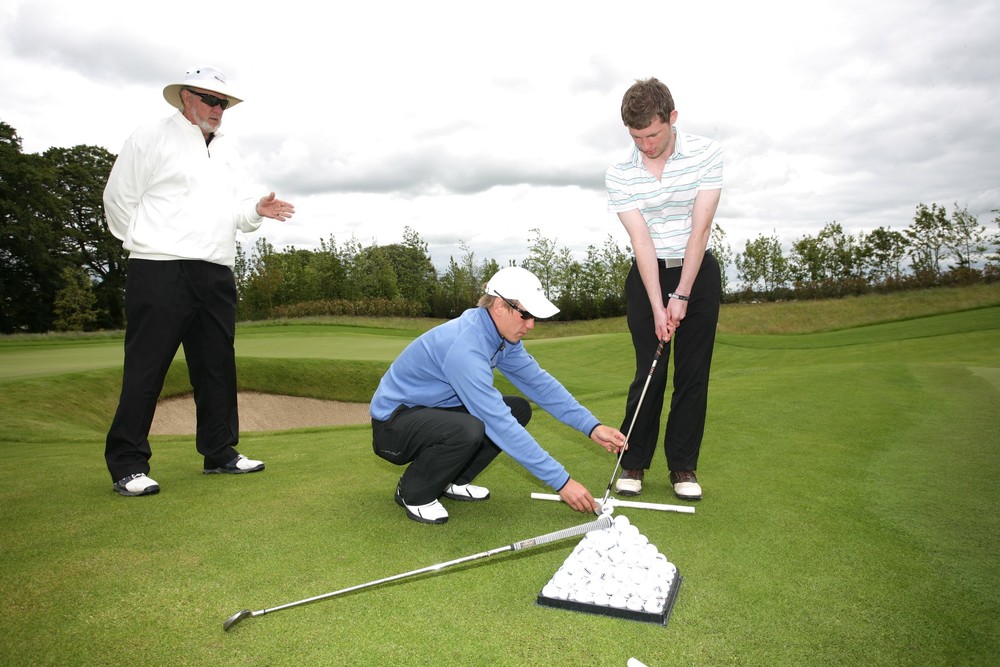 Dave PelzLess than a year after taking a one-day school under the guidance of the highly trained and endlessly patient gaze of my instructors, I quickly realised that there is a big difference between knowing what to do and actually being able to do it. They call it practice, apparently, and it’s what differentiates Padraig Harrington or Pelz’s star student, Phil Mickelson, from the average player.
Dave PelzLess than a year after taking a one-day school under the guidance of the highly trained and endlessly patient gaze of my instructors, I quickly realised that there is a big difference between knowing what to do and actually being able to do it. They call it practice, apparently, and it’s what differentiates Padraig Harrington or Pelz’s star student, Phil Mickelson, from the average player.
It is not that they are more naturally gifted than the rest of us but the fact that they have learned how to play all the shots and grooved their techniques with hour upon hour of hard work.
Pelz is regarded as golf’s foremost authority on the short game and putting and while thousands of amateurs attend any one of his six Scoring Game schools in the United States and are already flocking to the first non-American school at Killeen Castle, it is the endorsement of his methods by major winners such as Mickelson, Vijay Singh, Steve Elkington and Mike Weir that impresses most.
He attended Indiana University on a golf scholarship from 1957 to 1961, compiling a less than impressive 0-22 record in head-to-head matches with a former Ohio State All-American by the name of Jack Nicklaus. Yet it was those morale crushing defeats at the hands of the young bear, who would go on to the design the Killeen Castle course that will host the 2011 Solheim Cup, that sowed the seeds of doubt in Pelz’s mind about his ability to make it as a professional golfer.
Armed with a degree in Physics, he joined NASA in the early 1960s and played his part in the space race, sending objects flying off to Mars and Venus using the same mathematical principles that govern the flight of a great golf shot.
Golf has always been his passion but it took guts to abandon a safe job at NASA for the vagaries of the golf business and like any good short game, it took plenty of perseverance too.
“I took one year’s leave of absence and lost every dime I had and mortgaged my house and both cars,” Pelz explains. “I lost quite a bit but in having as much fun as I did when losing money, I told myself that if I can make a living in golf, I will have one of the most fantastic careers and an enjoyable life.”
The philosophy behind Killeen Castle is not only to provide a five-star facility that will give the members of the golf club years of golfing pleasure but also to attract visitors from every corner of the globe to one of the most spectacularly beautiful corners of Ireland.
Situated in an impressively appointed building just a short stroll from the five-star clubhouse, the school has every conceivable facility for improving your short game from practice greens, covered teaching bays and video analysis suites to pitching greens, practice bunkers and putting greens.
I explain to Pelz that I had thoroughly enjoyed my day’s instruction under the watchful eyes of Jussi Pitkanen and Conor Devery. But he was not surprised to hear that I was soon back at my old habits, three-putting, thinning bunker shots and sending wedge shots rocketing over greens.
“Nobody us going to give it to you in golf,” he says. “That is the wonderful thing about this great game. It only takes a little bit of effort at home - 10 minutes a day, four days a week. If you are not willing to do that don’t complain about it. Once every six months is not going to work. You have to train the muscle tone and the feel.”
Compared to hitting a 300 yard drive, which is beyond the physical talents of most people, the short game requires little athletic ability and lots of practice. It’s what makes Phil Mickelson so much better than the rest of us.
“Well, he knows how to hit all the shots,” Pelz concedes. “But Phil is not great in any sport except golf because he has worked so hard in golf. Golf is not what you are capable of. It is what you have internalised.”
It is hours of practice that makes Mickelson as good as he is and Pelz gives an example of just how competitive and hard-working the Californian can be.
“One of our little drills is getting up and down out of sand,” Pelz says. “You start off by hitting 30 sand shots with good lies. But you can’t get out of the bunker until you hit three in a row within three feet. That’s what we call the closer of this drill.
“So I started working with Mickelson in January 2004 and at that time the most any pro had done, including Tom Kite and seven major winners, was eight in a row. So I give this drill to Phil and immediately he wants to beat eight.
“In 2004 the most he ever did was 10. In 2005 he set the record at 15. In 2006 he got it up to 20. And in 2008 he got it up to 23. The second most is still eight. Now that is how good Phil Mickelson is when he gets in the groove. He hasn’t beaten 23 yet this year, but I wouldn’t put it past him.”
[Killeen Castle - Membership information]
Full members
Initiation fee - Individuals €5,000. Family €10,000.
Annual dues (exclusive of VAT at 13.5 percent)
Individual €3,850. Family €7,000. Juvenile Under 18, €500. Under 24, €750. Under 30, €1,250.
Business Members
Initiation fee - €30,000
Annual dues - €9,500 (up to and including Primary and 2 nominees).
Annual dues - €2,825 (3rd nominee). Exclusive of VAT at 13.5 percent.
Overseas members
Initiation fee - €3,000
Annual dues - €2,500 exclusive of VAT at 13.5 percent.
